Carnaval de Corumbá
The Carnaval in Corumbá dates back to the late 19th century, when soldiers from Rio de Janeiro were posted to guard the frontier in the aftermath of the Paraguayan War. These, along with successive military personnel stationed in the town, have imported elements of the Rio Carnaval here to Corumbá.
As with carnaval elsewhere, it occurs before lent - a period in the religious calendar covering the six weeks before easter. Since lent is traditionally a period for for fasting and solemn reflection, carnaval provides the opportunity for a final big celebration. This occurs in late February or early March. The carnaval event is a competition between the town's samba schools (escolas), with each group generally representing suburb. Their presentations are scored based on costumes, carnaval floats, music and choreography which are coordinated to represent their chosen theme. The group with the best overall score is then crowned as the champion for that year. The competitive element means that costumes and floats remain closely guarded secret until the big night
Pre-carnaval events include selection of the king and queen. Here, would-be queens and princesses are asked to prove their samba skills.
The main carnaval parade is run over two nights, and occurs along Avenida General Rondon overlooking Corumbá's historic riverfront. The first night is for the "minor league" groups, whereas the second night is set aside for the more spectacular "major league groups". A third night is then run for the "cultural carnaval", which celebrates the town's history, local community groups, and children. There's also a week of pre-carnaval events including the the competition to select the official carnaval king (Rei Momo), his queen, and princesses - who form the royal court (corte real) which opens the parade and welcomes each samba school into the arena. Other pre-carnaval events include open-air music shows and block parties.
Image Gallery - Carnaval de Corumbá 2017

Loading Flickr Images
Unsung Heroes of Carnaval
Although the main event lasts only a few nights, and the performers gain much of the kudos, the events such as Carnaval wouldn't be possible without a dedicated army of workers and volunteers working behind the scenes. Those working in the samba schools need to spend months preparing - planning what will be presented, designing costumes, running fundraising events, making costumes, making carnaval floats, and coordinating the samba school's entry and performers.
Funding is crucial to ensure that the carnaval can take place, and needs to be available well in advance to buy the necessary materials for costumes and floats, rent for workshops, and to help pay a wage to local artisans who spend months designing and making everything used in the samba schools' presentations. Some funding is available through the town council - but getting access to that funding can be bureaucratic, and sometimes isn't finalised until just a few weeks before carnaval. Even well-intentioned requirements, such as the need to provide receipts for all materials and payments (for compliance with the local government transparency laws), can create issues since many part-time local artisans simply don't have the mechanisms or business experience to issue receipts or document their own activities and costs. The inevitable funding shortfall needs to be covered through finding sponsors, running fundraising events such as shows, and through use of volunteers. In short, carnaval is serious business and depends on dedicated organisers and volunteers within the local community.
Above:Telma, working with samba school "A Pesada" is one of a dedicated crew of organisers and workers who spend months ensuring that everything is ready on the night.
Below: Carlos Henrique is a creative director for "A Pesada", and is seen here making headresses for performers a few days before carnaval.
Order of Presentation
Although the carnaval may seem like a simple parade, there's a scripted order for the samba schools to follow - with key elements which to be included to pass the judges' review.
|
Front Commission |
Opens the presentation and sets the scene for the thematic groups that follow. For example, if school's theme is the history of Brazil, then this opening act may represent the Brazilian Indians. This opening group usually have a choreographed dance or activity. |
|
1st Flagbearer couple |
An ornate but formally costumed male/female couple representing the samba school, and holding the school's official flag. Graceful, full of smiles. The couple bow/curtsey respectfully before the dignitaries, judges, and audience. |
|
Opening Wing |
This is generally a large carnaval float, with school's name and also in keeping with the overall theme. For example, if the theme is History of Brazil, then opening wing may be a caravel - represent discovery. |
|
Baiana Wing |
This is often, although not always, the group that follows the opening wing. Baianas are one of the most important elements of any samba school's presentation. This is a procession of women in large stylized hoop dresses representing the "aunts" who would oversee carnaval celebrations, and chaperone practices, in the early days when carnaval and samba were regarded as less than decent. The term "Baiana" refers to people from the Brazilian state of Bahia - which is rich in african culture and history. It is migrants from this state who first originated samba and the Rio Carnaval tradition. |
|
Ward Dancers |
This is comprised of younger participants drawn from the local community which the samba school represents. These dancers are tasked to excite and seduce the audience and judges with their samba, smiles, jokes, and sometimes scanty outfits. Participating in this group is seen as a good first step towards becoming a king/queen with the drum corps (bateria). |
|
Queen of the Bateria |
In addition to the royal court (king, queen, and princesses) for the overall carnaval, each samba school has its own royal court which precedes the drummers (bateria). The key personality is the Rainha da Bateria, who dances in front of the drum corps, dressed in a glamorous fantasy costume. She is sometimes accompanied by a king, and a godmother or princesses. In the Rio Carnaval, the Rainha da Bateria is coveted position within the samba school - often going to famous actresses or models. |
|
Master of the Bateria |
Like all orchestras, the drummers of samba schools also have their conductor, called the Mestre da Bateria, as well as other assistants. These walk behind the queen, and immediately ahead of the bateria. |
|
Drum Corps |
This is the orchestra, consisting of drums and other percussion instruments, pounding out the samba and other rhythms that procession is moving and dancing to. The faster and harder the drummer plays, the faster the members usually parade. Smooth synchronization of the music and the pace of the procession is a major factor for judging. |
|
Samba School Leaders |
This is the generally the final float in the procession, containing the president and other leaders of the samba school. |
The royal family - King Momo, the Carnaval Queen, and Princesses - welcome each samba school into the parade area. They also make numerous public appearances in the days leading up to carnaval.
Samba Schools
Corumbá currently has ten samba schools, each nominally representing a different area - although members and fan loyalty aren't necessarily dictated by geography. As with football, they are split into a major and minor league.
The minor league (Group 2) parades on the first night of carnaval, with major league (Group 1) following on the second night.
Major League (Group 1):
- A Pesada
- Marques de Sapucai
- Mocidade Nova Corumbá
- Vila Mamona
- Império do Morro
- Unidos da Major Gama
- Caprichosos de Corumbá
- Acadêmicos do Pantanal
- Estação Primeira
- Imperatriz
The third night of carnaval includes a parade of classic vehicles. This is a great chance to see some rare vehicles which were only ever produced in Brazil, such as this 1970s Volkswagen SP2 sports car, and Chevrolet Opala. Photo credit: Amin Feres
Carnaval of Culture
The third night of carnaval is set aside to celebrate the town's citizens, culture, and community groups - with the competitive element being set aside. On this night you'll see much more involvement from local kids, cultural and educational groups. The town's car enthusiasts also make use of this opportunity to trot out their prized cars with a collection of vintage trucks, jeeps, and sports cars.
Above:The third carnaval night (carnaval of culture) celebrates carnaval's history along with local community groups.
Below: The third carnaval night also sees greater participation of local children.
Although the Carnaval is generally safe and friendly, visiting tourists should avoid presenting themselves as an obvious temptation for thieves. Don't carry passports, large amounts of cash, or be flashy with big cameras when joining festivities. The crowd (and distraction) can provide opportunity for pickpockets.
Additionally, although the block parties (blocos) are a local tradition, they're probably best avoided by visitors. A large amount of alcohol is consumed at these pre-carnaval events, meaning that they have a reputation for getting messy.






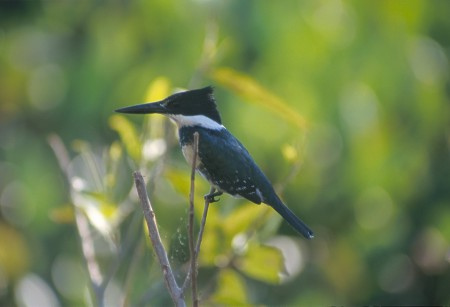



Banner image: A Pesada's Rainha da Bateria, Samya Cristine, dances in front of the Bateria (drum corps) in the Carnaval de Corumbá 2017 (Andrew Mercer)
Footer images: Andrew Mercer
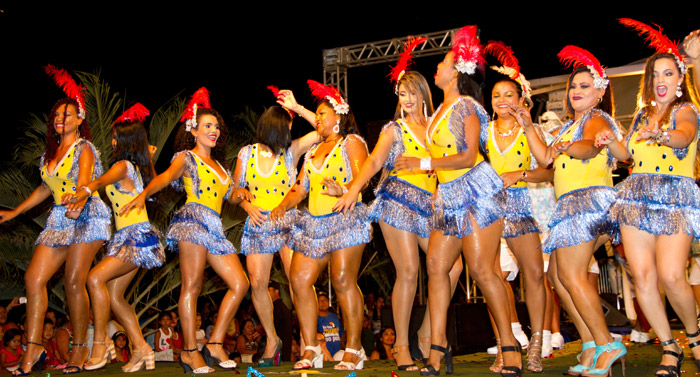
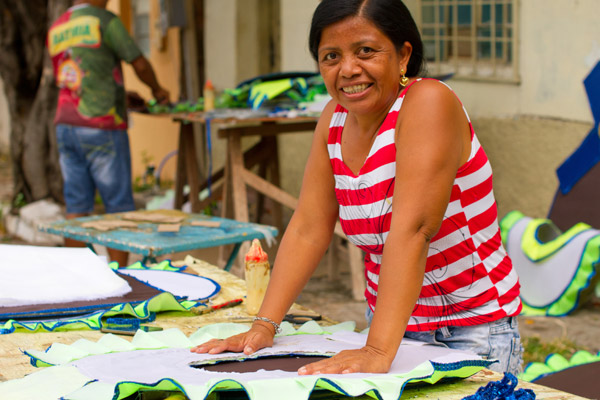
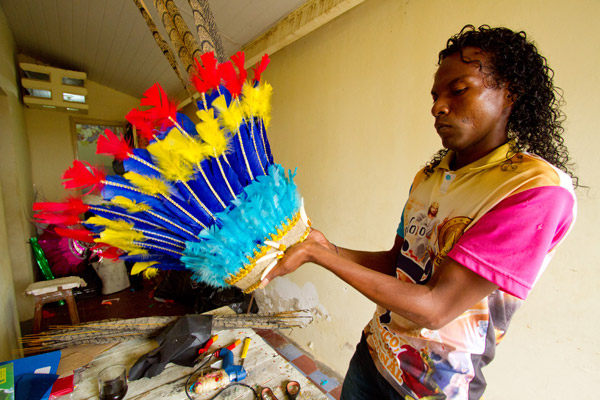
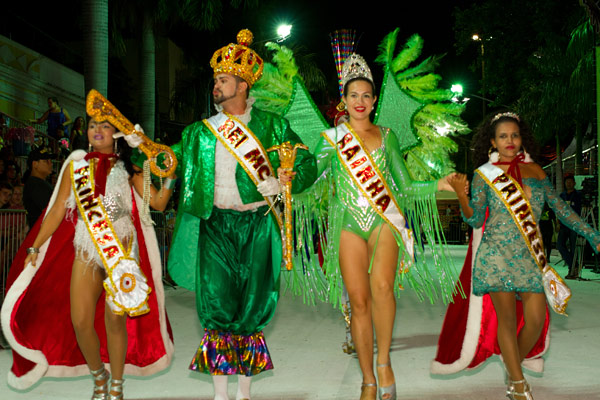
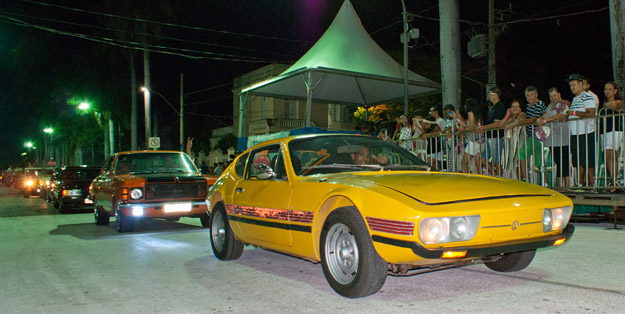
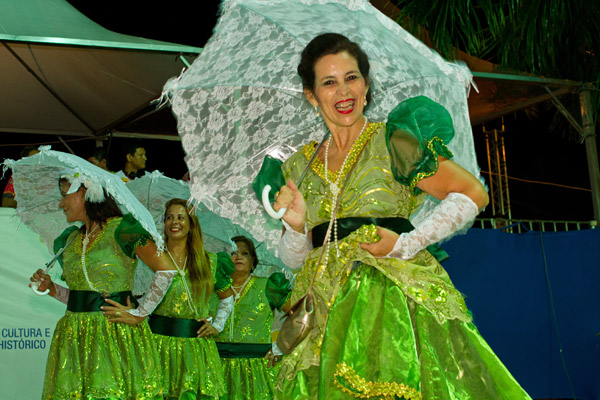
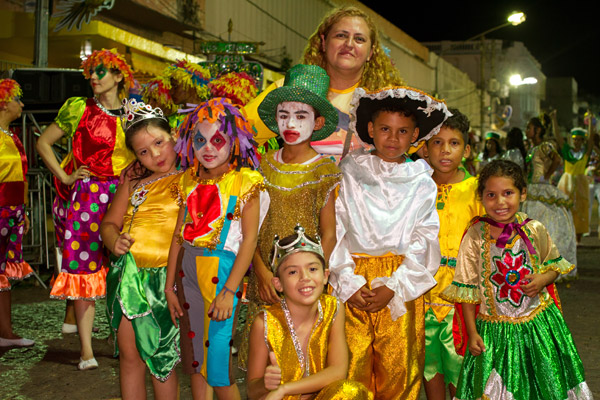
Pantanal Escapes